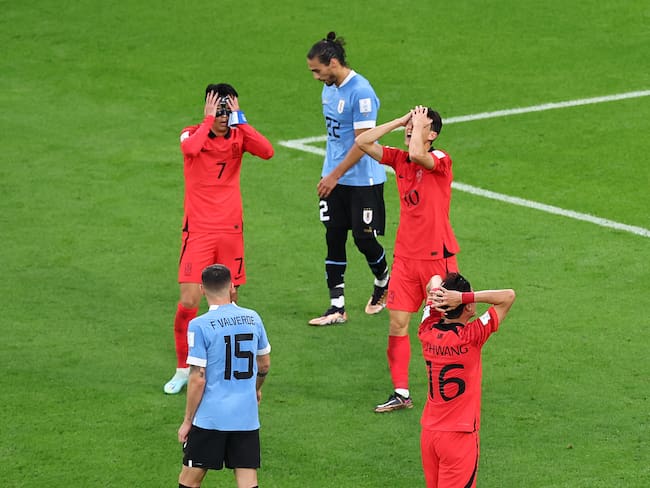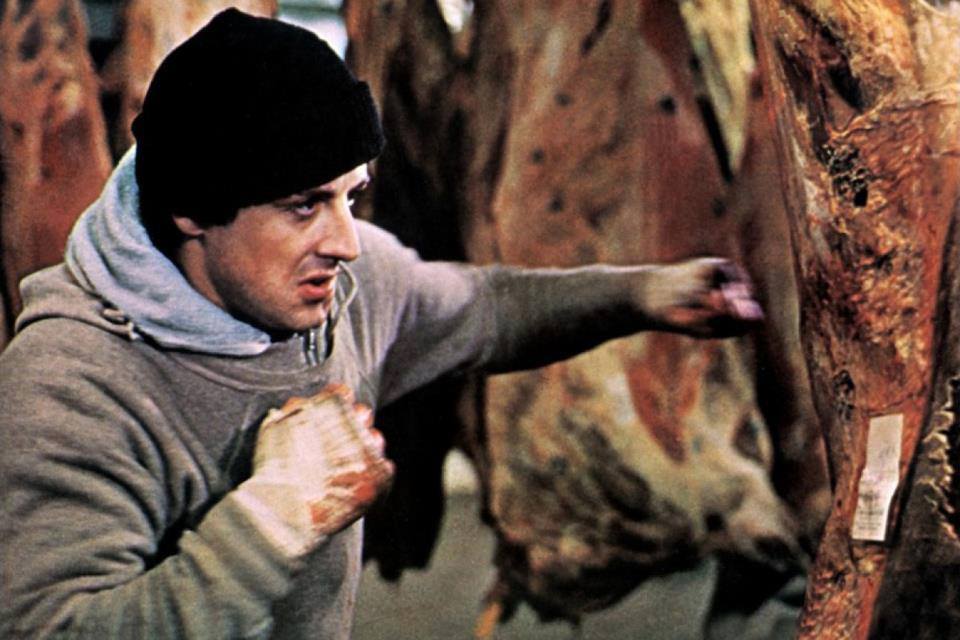Improving The Accuracy Of Automated Visual Inspection For Lyophilized Vials

Table of Contents
Optimizing Image Acquisition for Lyophilized Vials
High-quality images are fundamental for accurate defect detection in automated visual inspection. The effectiveness of even the most sophisticated algorithms is directly dependent on the quality of the input data. This section details factors influencing image quality and effective optimization strategies.
-
Lighting Techniques: Consistent and even illumination is paramount. Uniform, diffuse lighting minimizes shadows and highlights, while structured lighting techniques can enhance the visibility of subtle defects by creating distinct patterns. Careful consideration must be given to minimizing glare and reflections from the vial's surface, particularly with transparent or translucent vials. Experimentation with different lighting angles and intensities is crucial for finding the optimal setup.
-
Camera Selection: The choice of camera significantly impacts image quality and the ability to detect defects. Resolution is critical for resolving fine details; higher resolution cameras capture more information, enabling the detection of smaller imperfections. The sensor type (e.g., CMOS, CCD) also influences factors like sensitivity and noise levels. The field of view needs to be carefully selected to ensure the entire vial is captured within the image, accommodating variations in vial size and shape.
-
Image Preprocessing: Raw images often require preprocessing to improve defect visibility. Noise reduction techniques mitigate random variations in pixel intensity, enhancing the clarity of the image. Contrast enhancement techniques improve the distinction between defects and the vial's background, making defects more easily detectable. Image sharpening techniques can further refine details and improve the accuracy of defect detection algorithms.
-
Calibration and Standardization: Regular calibration is essential to maintain the accuracy and consistency of the image acquisition process. This involves using standardized reference objects to verify the camera's alignment, focus, and color accuracy. Consistent calibration procedures ensure that images acquired at different times and under slightly varying conditions remain comparable, preventing variations that could negatively impact algorithm performance.
Advanced Algorithm Development for Defect Detection in Lyophilized Vials
The algorithms employed for defect detection are crucial for the accuracy of automated visual inspection. This section focuses on the role of advanced techniques in improving the reliability and precision of defect identification.
-
Machine Learning Algorithms: Deep learning, particularly convolutional neural networks (CNNs), have emerged as powerful tools for automated visual inspection. CNNs excel at identifying complex patterns and features within images, enabling accurate classification of various defects. Other machine learning algorithms, such as support vector machines (SVMs) and random forests, can also be employed, often in conjunction with CNNs for optimal performance.
-
Defect Classification: Accurate classification is crucial; distinguishing between critical and non-critical defects is essential for efficient quality control. Algorithms must be trained to reliably identify cracks, particulate matter, discoloration, and other common imperfections in lyophilized vials. The severity of each defect type should also be assessed to prioritize corrective actions.
-
Algorithm Training and Validation: Training machine learning algorithms requires large, high-quality datasets of images representing various defect types and levels of severity. Data augmentation techniques can be used to expand limited datasets. Robust validation procedures, including cross-validation and independent test sets, are crucial for assessing the generalization performance of the trained algorithm and for mitigating bias.
-
False Positive and False Negative Reduction: Minimizing both false positives (incorrectly identifying a defect) and false negatives (missing actual defects) is essential for accurate automated visual inspection. Techniques such as ensemble methods and careful selection of algorithm parameters can significantly improve the accuracy of defect detection.
Integrating Spectral Imaging for Enhanced Defect Characterization
Spectral imaging provides a significant enhancement to traditional visual inspection. By analyzing the spectral signatures of materials, spectral imaging provides additional information beyond visual appearance, leading to more accurate and informative defect characterization.
-
Hyperspectral Imaging: This technique captures images across a continuous range of wavelengths, providing detailed spectral information about each pixel in the image. This enables the identification of the composition of defects, for example, differentiating between different types of particulate matter based on their spectral signatures.
-
Multispectral Imaging: Using a limited number of specific wavelengths, multispectral imaging enhances contrast and improves defect detection, often providing complementary information to standard visual inspection.
-
Data Analysis and Interpretation: Sophisticated data analysis techniques are required to extract meaningful information from hyperspectral and multispectral data. This may involve techniques such as principal component analysis (PCA) and linear discriminant analysis (LDA) to reduce data dimensionality and enhance feature extraction.
Implementing Quality Control Measures for Automated Visual Inspection Systems
Regular quality control is crucial for ensuring the continued accuracy and reliability of the AVI system over time. A comprehensive quality control plan ensures consistent performance and minimizes the risk of errors.
-
Regular System Calibration and Validation: Periodic calibration and validation using standardized reference materials ensure the accuracy of the system’s measurements and maintain optimal performance. This should be done according to a predetermined schedule and documented meticulously.
-
Performance Monitoring: Tracking key metrics such as defect detection rate, false positive rate, and false negative rate allows for continuous monitoring of system performance and identification of potential issues. These metrics should be regularly reviewed and analyzed to identify trends and implement corrective actions as needed.
-
Operator Training and Proficiency: Proper operator training is essential for ensuring correct system operation and accurate interpretation of results. Training should cover aspects such as system maintenance, troubleshooting, and data analysis. Regular competency assessments should be conducted.
-
Regular Maintenance and Preventative Measures: Regular maintenance and preventative measures minimize downtime and ensure the system operates optimally. This includes cleaning, inspection, and preventative maintenance procedures according to the manufacturer's recommendations.
Conclusion
Achieving high accuracy in automated visual inspection of lyophilized vials demands a multifaceted approach. This includes optimizing image acquisition, employing advanced algorithms, particularly machine learning techniques, integrating spectral imaging for enhanced defect characterization, and implementing robust quality control measures. By implementing the strategies outlined above, pharmaceutical manufacturers can significantly improve the reliability and efficiency of their visual inspection processes, ultimately ensuring the quality and safety of their lyophilized products. Continuously refining your automated visual inspection strategy is crucial for maintaining the highest standards in pharmaceutical manufacturing. Contact us today to explore how we can help you enhance your automated visual inspection system and improve your overall quality control processes.

Featured Posts
-
 Boris Dzhonson Proti Planu Trampa Perspektivi Mirnikh Peregovoriv
May 12, 2025
Boris Dzhonson Proti Planu Trampa Perspektivi Mirnikh Peregovoriv
May 12, 2025 -
 Analyzing Cody Bellingers Role In Protecting Aaron Judge For The Yankees
May 12, 2025
Analyzing Cody Bellingers Role In Protecting Aaron Judge For The Yankees
May 12, 2025 -
 Sudamericano Sub 20 Minuto A Minuto Del Partido Uruguay Vs Colombia En Vivo
May 12, 2025
Sudamericano Sub 20 Minuto A Minuto Del Partido Uruguay Vs Colombia En Vivo
May 12, 2025 -
 One True John Wick A Critical Analysis Of The Franchise
May 12, 2025
One True John Wick A Critical Analysis Of The Franchise
May 12, 2025 -
 Boris And Carrie Johnson Release Heartwarming Easter Message With Son
May 12, 2025
Boris And Carrie Johnson Release Heartwarming Easter Message With Son
May 12, 2025
Latest Posts
-
 Will Sylvester Stallone Have A Larger Role In Future Jason Statham Films
May 12, 2025
Will Sylvester Stallone Have A Larger Role In Future Jason Statham Films
May 12, 2025 -
 Plata Lui Sylvester Stallone Pentru Fiecare Film Rocky
May 12, 2025
Plata Lui Sylvester Stallone Pentru Fiecare Film Rocky
May 12, 2025 -
 Stallone And Statham Is Stallones Appearance A Setup For A Bigger Role
May 12, 2025
Stallone And Statham Is Stallones Appearance A Setup For A Bigger Role
May 12, 2025 -
 Cat A Incasat Sylvester Stallone Pentru Filmele Rocky
May 12, 2025
Cat A Incasat Sylvester Stallone Pentru Filmele Rocky
May 12, 2025 -
 Sylvester Stallone Si Rocky O Analiza Financiara
May 12, 2025
Sylvester Stallone Si Rocky O Analiza Financiara
May 12, 2025
